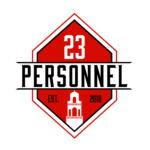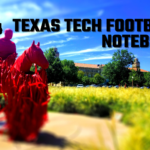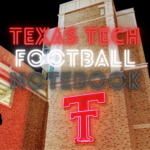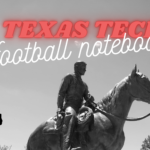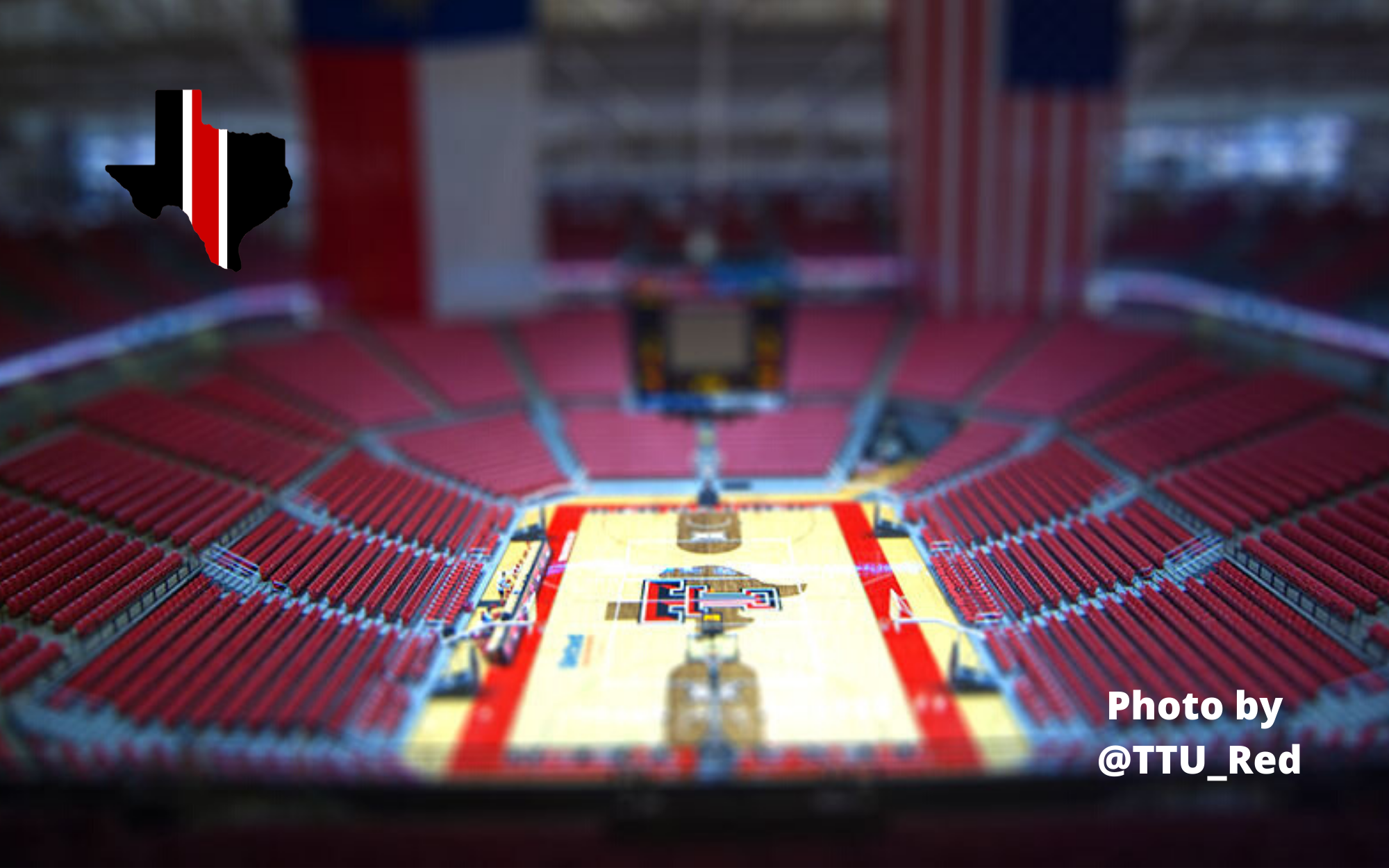Ever since November 19, 2017, when Texas Tech made the Northwestern Wildcats look like the Flint Tropics, something schematically was different about Texas Tech’s defense compared to the rest of basketball. I wanted to call it the “the half-court Press Virginia,” but settled on pairing it with our methodical offense to give it the moniker, The Meat Grinder.
It was a beautiful thing to watch.
Ken Pomeroy began charting the outcome of every college basketball possession in the early 2000s and, as a result, was able to generate per-possession ratings for teams, specific lineups, and individual players. His formula for rating defenses — now widely accepted as the standard by betting markets and the coaches themselves — measures how many points a defense would give up over 100 possessions to an “average team.”
In the Kenpom era (1999 – 2019), the 2019 Meat Grinder was the best per-possession defense ever measured. That’s #1 out of 6,000 plus defenses or approximately the top 99.998 percentile.
Tech held its first seventeen opponents to fewer than 1 point per offensive possession. To my knowledge, it’s the second longest streak to start a season, tying the 2006 National Championship Florida team that featured Joakim Noah, Corey Brewer, Al Horford, and Mo Speights.
In Tech’s 91-62 blood-letting of Kansas, Tech held Bill Self scoreless on 18 out of the Jayhawk’s last 22 first-half possessions. I’m not certain, but it’s hard to believe anything like that’s been done before.
In the tournament, Michigan scored the fewest points in school history for a tournament game and the fewest ever by a 2 seed during the NCAA tourney.
And it wasn’t just effective at stopping entire teams or systems.
Zion Williamson had one of the most statistically impressive & efficient seasons in college basketball history. His offensive efficiency rating against Tech was roughly 24% below his season average, no one forced him into more turnovers, and it’s the only game that he fouled out of, primarily from offensive charges.
The Meat Grinder was, arguably at least, even the best at limiting Coach K with the biggest freak since Lebron.
A Summary of The Meat Grinder
Admittedly, I may have an understanding of ~5% of what went into constructing The Meat Grinder, but I’m convinced that Tech leverages this scheme for each opponent with as much (but mainly more) information than anyone in the country. In the mold of the Moneyball As, Jeff Luhnow’s Stros, or Darryl Morey’s rockets.
Basketball is similar to football, in that schemes are simply a numbers game. Teams run offense to force helpers to rotate. If rotations occur, an exploitable numbers advantage should present itself somewhere.
So it makes sense that many defenses want to prevent situations when rotations might arise, such as switching every ball screen. In some ways, The Meat Grinder does the opposite — it actively seeks rotations; really, just one particular kind of rotation.
Beard & Mark Adams ingrain into their players the day they step on campus to rotate early & often, and to arrive at the ball in a really foul mood.
A college defense will face a 100+ variations of offensive sets or actions over the course of a season. That’s a lot of nuanced defensive reads & rotations to prepare for.
Not Tech. And the “no middle” concept is the pillar behind this.
In 2019, Jarrett Culver wasn’t merely indifferent about allowing guards to drive past him baseline. He rode them into a frantic & rushed baseline drive. By cramming the same thing (the baseline drive) over and over down opponents’ throats, Tech only needed to be precise on a few different rotations.
Quite frankly, no one figured out how to solve the 2019 Meat Grinder. You either had a guard capable of beating the defense into the middle — good luck finding one of those at K-Mart — or you need to man up and take advantage of the baseline drive opportunities we give you.
(I guess you could also pray that The Meat Grinder is asleep because it already choked you out by 50, so you dominate the offensive glass like WVU in the Big 12 tournament)
What Made It So Good? Was It Math?
My hunch is that Tech’s staff possesses data on every college basketball possession from the last 20 years or so. And those numbers likely indicate baseline drives are the least efficient way to score the basketball.
By forcing dribblers that way, and having a helper immediately stop the ball just outside the paint, the driver tends to get pinned against the base line — almost behind the goal & backboard so there’s not an angle to even attempt a shot.
It was not a fun place to find yourself offensively. Culver’s mounted on you and will deflect most shots while trailing from behind, a helper’s formed a wall in front of you to draw a charge or deflect a pass, Tariq Owens is hovering to erase any shot at the rim, and Matt Mooney could’ve been mistaken for Troy Polamulu defending passes to shooters in the corner or at the top-of-the-key.
I’ll bet that historical data shows this game’s elite scorers made most of their money from the middle of the paint. And if a heat map was drawn showing how efficient offenses are at each square foot of the court, that specific area near the baseline where we funnel drivers is the least dangerous place for the ball to be in the half court.
For those reasons, I think simple arithmetic supports an argument that Tech’s scheme is the most effective way to defend a team in the half court.
However, you’ll never hear Beard give the system any credit. In fact, for as vibrant and engaging as he is with the media, he rarely, if ever, talks substantive Xs and Os. Even when he’s publicly heaping praise on Mark Adams, Beard mostly references his work ethic, consistency, ability to motivate, etc.
Basketball teams all over the country, and especially at the HS level, are now attempting to run a similar system. Even though Beard has an open-door policy with coaches from every level, I predict that, publicly, he will continue to act like a moronic shooty-hoops coach, claiming to be a C student and feigning surprise when Carlos Silva correctly pronounces a big word during a press conference.
In reality, Beard knows there aren’t many people in this business smarter than him, and he’ll continue to protect any easily-replicated advantages that he possesses like Fort Knox.
Was It Black Magic?
While the math behind the system certainly appears strong, it’s not an immovable object. As mentioned above, it’s designed to create rotations and a theoretical numbers advantage for the offense. So it can be scored on, even when Tech plays it perfectly.
Spoiler alert: The 2018-2019 team played it perfect most of the time.
Tech’s on-ball defenders’ foot angles are so extreme that it’s nearly impossible for drivers to get to the middle (and equally impossible to stop the ball from driving baseline!). But if the driver does try to fight it and go through the defender, the end result was usually a charge.
The system requires extremely tough players, especially at the guard spots because the frequent & frantic rotations often leave them boxing out and defending the other team’s bigs right under the basket.
Perhaps most importantly, though, each player must have 100% faith that the other cogs in The Meat Grinder behind them will do their job when they inevitably get beat on a baseline drive.
That was the magic of the 2019 Texas Tech team — Beard’s ability to whip his guys into a frenzy playing this unorthodox system to perfection, every night, regardless of the stakes or situation.
Leaving gods of the sport like Bill Self to delay his charter back to Lawrence so he can gather up the shredded morsels of his legendary high-low offense.
The Freakin’ Meat Grinder.
Ultimately, while math was certainly in Tech’s favor last year, I believe it was the magic that made The Meat Grinder the best college basketball defense of the century.
Quotes
“It’s like one guy on the ball and four in a zone. If you keep the ball in the middle of the floor, you’ve got 100 percent operating capacity. Once we move it to the side, we feel like we have a better advantage in getting the offense to do what we want them to do.” – Mark Adams
“If you think of basketball, it always turns into advantages. It’s a scramble. In today’s game, it’s the ball screen. The ball screen makes you help. Then it’s a scramble. Or guys you can’t guard one-on-one get by. You have to help, and there’s a scramble. Really, that’s what defense is. It’s three guarding four, it’s four guarding five, it’s two guarding one. We put our guys in those situations every day.” – Chris Beard
“People think it’s weird looking and don’t understand it until they play against it…. it’s just a different type of defense… they get confused… nobody really runs [this defense] the way we run it… Adams spends a lot of time teaching when to do different things with it in different situations…. we didn’t run it at all during Beard’s first year..” – Daryl Dora
“Playing Texas Tech is like going to the dentist without Novocaine.” – Kevin Willard, Seton Hall.
“They just make you run very bad offense.” – Matthew Graves, South Alabama.
“What makes them so good defensively? Intensity and buy-in. We gained nothing from this game and will just have to try and put it behind us.” – Bob Walsh, Maine.
“Maybe I should have picked out tape of the best defense [in the country] and look[ed] at how we should attack them a few months ago, and in the off-season. Hard with a one day prep. You got one day between games and you got to figure out how to beat the number 1 defense in the country.” – Nate Oats, Buffalo

